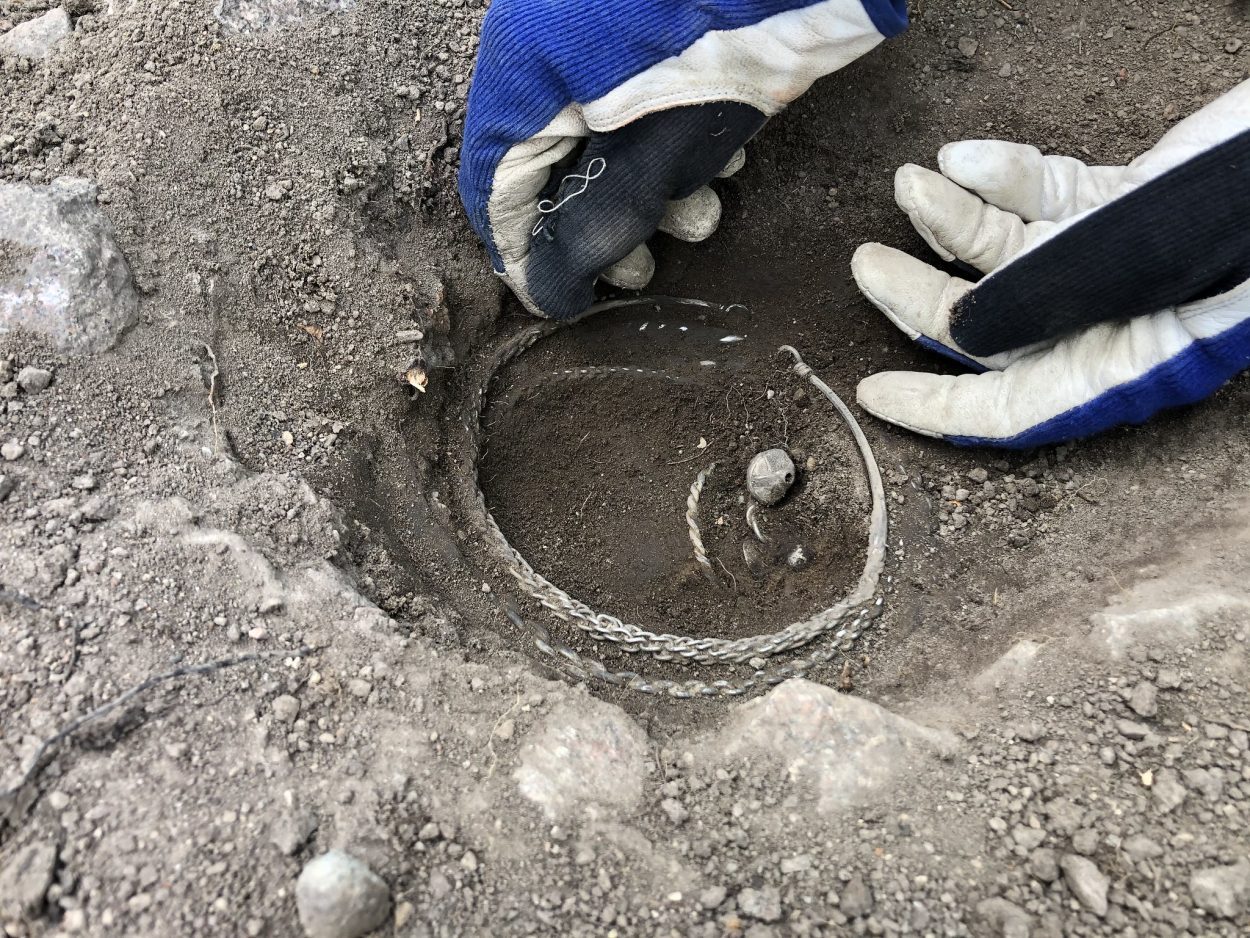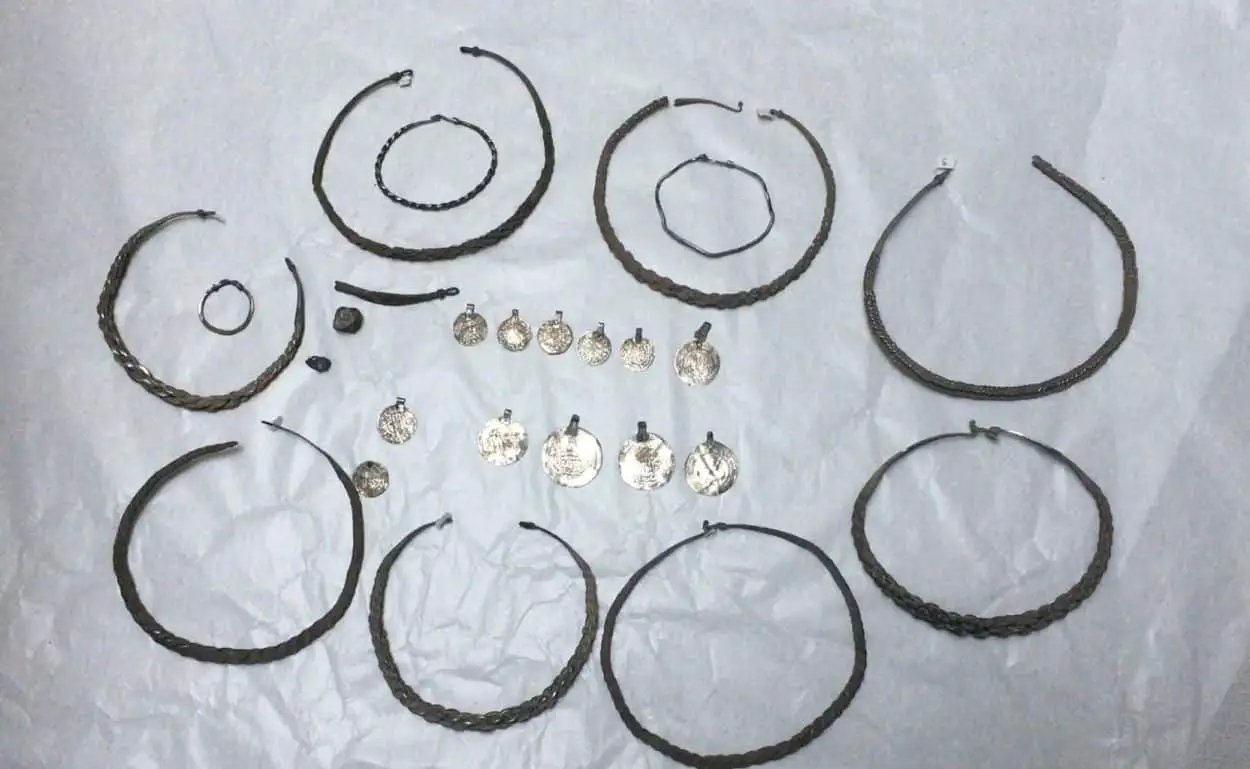Archaeologists from Arkeologerna have uncovered a 1000-year-old Viking Age treasure hoard in Täby, Stockholm.
The discovery was made during excavations of a Viking settlement where the researchers found the remains of 20 houses and structures that date from AD 400, continuing into the Viking Age (AD 800-1050) and the early Middle Ages.
While excavating a wooden floor in one of the buildings, the team discovered a deposited ceramic pot containing a pouch made of linen holding silver coin pendants (used as jewellery), in addition to various items of jewellery such as eight high quality torque-style neck rings, two arm rings, one ring and two pearls. Excavations of the settlement also uncovered objects such as arrows, quern-stones, and ornate amulet rings.
Several of the coin pendants are European in origin, coming from England, Bohemia and Bavaria, in addition to five Arabic coins (dirhams) which suggests a far-reaching trade network.

One of the coins dates from the 10th century AD and was minted in the city of Rouen in Normandy, France. According to Professor Jens Christian Moesgaard at Stockholm University, this type of coin has only previously ever been identified from drawings in an 18th century book.
Speaking of the discovery, Maria Lingström from the National Historical Museums in Sweden said: “This is something you probably only experience once in a lifetime.”
Why the hoard was deposited is a mystery to the researchers, with one interpretation by archaeologist, John Hamilton, stating that “people hid and buried their treasures in difficult and tumultuous times”.
The artefacts have been sent to Acta Konserveringscentrum, a firm in Stockholm that specialises in conservation to be cleaned and documented.
Header Image Credit : Acta Konserveringscentrum AB





